Disclaimer:This post may contain links to products, software and services. Please assume all such links are affiliate links which may result in my earning commissions and fees.
As a digital publisher focused on organic traffic, search engine ranking software plays a critical role in our business model. We invest heavily in on page SEO software and use the insights to design content with a good chance of ranking in Google’s search results. These tools significantly increase our return on investment for developing new content, helping us generate five to fifteen times more traffic per piece of content we create.
And we accomplished all of this without resorting to any sketchy “black hat” SEO techniques. Let’s face it – that stuff doesn’t work very well these days. Google has gotten very good at spotting spam and banishing it to the outer darkness.
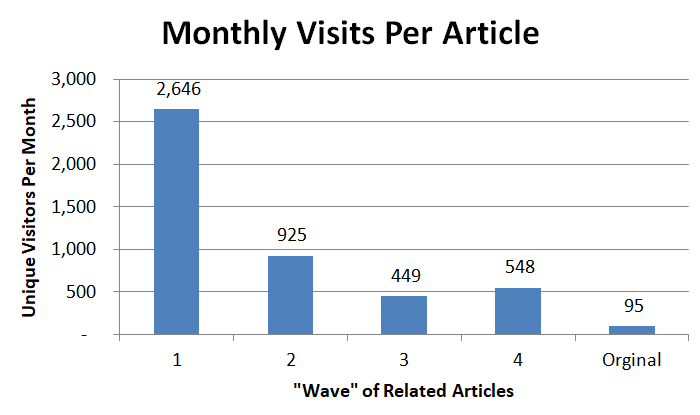
Our SEO strategy has three guiding principles:
- Identify keywords with weak content
- Execute Flawless on-page optimization
- Website delivers good user experience
No Link Building. No Blog Comment Spam. No Witchcraft about “tier 2 sites” or other silliness. Just content which Google views as highly relevant and engaging to the relevant user base.
We’ve found CanIRank, one of a new bred of SEO AI tools, to be an incredibly helpful contributor to this process. This CanIRank review will walk through how to use CanIRank to assess your ability to rank for a given search term and – more importantly – what areas of your website need to be adjusted to increase your chances of ranking.
Does it work? Look at the chart and judge for yourself.
SEO Software – The Key To Flawless Execution
When it comes to on-page SEO, Google has been very clear about what they want. Content needs to be relevant to the query and fully address the searcher’s intent.
A simple concept but often challenging to execute at scale, particularly if you’re working with dozens of pieces of content per week or hiring virtual assistants. This is one of the factors which attracted us to the idea of investing in new SEO software.
We have two key do it yourself SEO tools that we use to execute this process consistently across our different websites and types of content. They are –
- CanIRank – Shows us what we need to do to win a particular keyword
- SEMRush – Competitive perspective; shows us which keywords to target
While each has had a significant impact on our results (we discovered them about four years apart), it is the combination of the two DIY SEO Software packages which kicked our results to the next level. CanIRank is our primary piece of SEO Analysis Software. We use this to look inside a specific search term to understand what is require to win and optimize our content accordingly. SEMRush serves as our rank tracking software, audit platform for technical issues, and our primary source of competitive intelligence.
CanIRank Review – an X-Ray For Search Engine Results
Google rankings work in mysterious ways; CanIRank is an analytics platform that peels back the curtain. This product was based on a massive machine learning project aimed at figuring out the ranking logic behind Google search.
While CanIRank offers a full SEO suite which can support multiple strategies for ranking a website, their most compelling value proposition is the ability to nail your on-page SEO. This can deliver a swift improvement in the performance of an existing website, particularly if you have not spent much time working on search engine optimization.
Best of all – this is completely within your ability to control, You decide what to write and how to write it. Which topics to cover. You can execute this right now. No waiting for link outreach targets to get back to you or any haggling over content distribution.
To get this CanIRank review rolling, I’m going to start with their SERP analysis view. They scrape the top ranking websites in a search term and assess what we would need to do to rank for that search term. Take a look at this report:
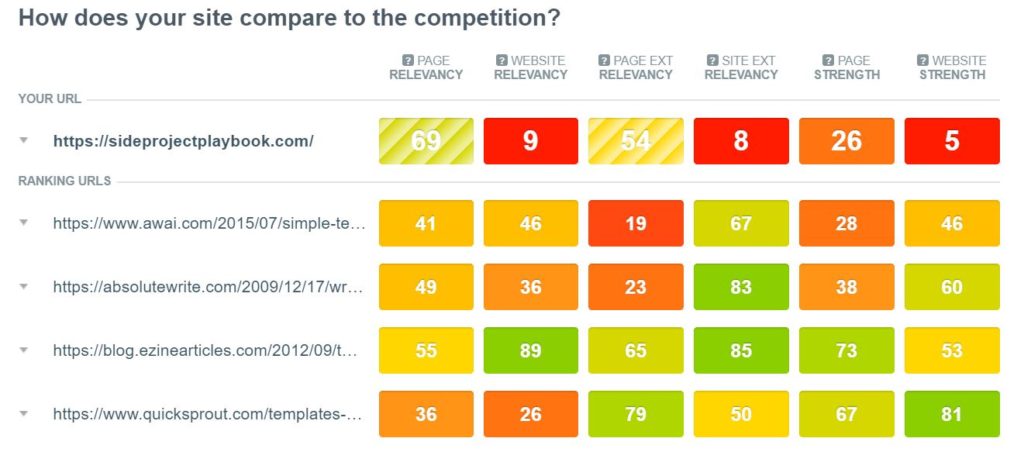
We’re a new website, so I’m not very worried about our “lack of strength”. That should improve over time as we build up content. The opportunity lies in the first four factors:
- Page Relevancy – Does our page appear relevant to the topic?
- Website Relevancy – How well do we cover related content?
- Page Ext Relevancy – Do we linking to that page with the right terms?
- Site Ext Relevancy – Do links to our website have relevant anchor text?
The first three factors are fully within your control (links include internal linking).
What this report shows me is most of our competitors aren’t executing very well. I should be able to nail my on-page optimization (page relevancy score of 70+) with a little fine tuning. We can easily publish additional articles about related topics (which bumps our website relevancy to 50+). A little judicious internal linking completes the effort. I can probably muscle a new page into this search with minimal effort.
Equally important – it tells me when to walk away. Take a look at this report (for a very different, highly competitive search). I don’t stand a chance of ranking for this one.
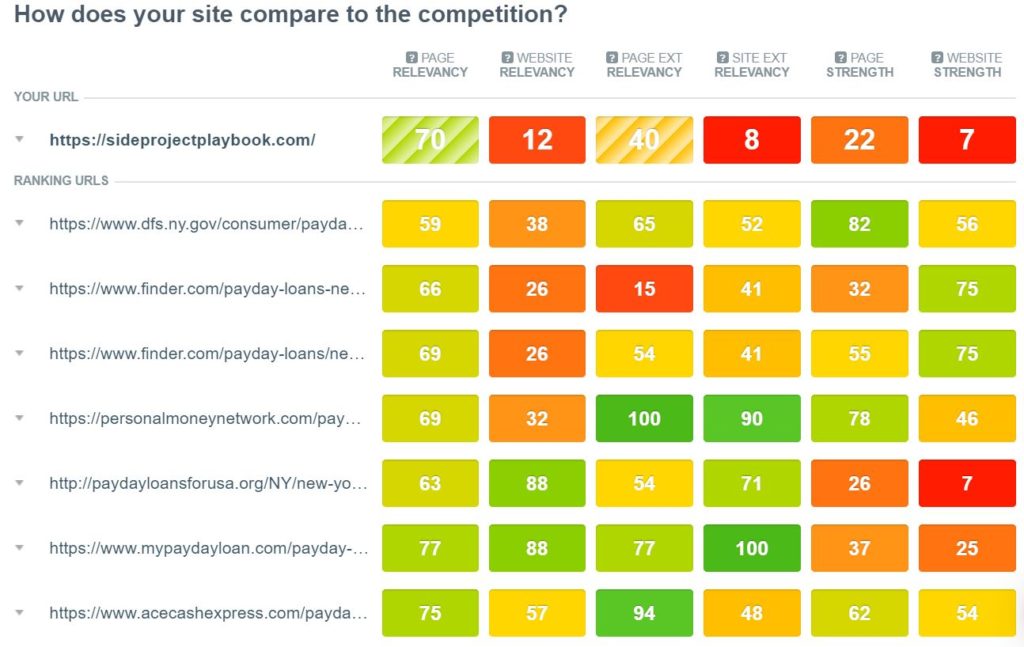
CanIRank Review – We Know… The Best Words…
So now that we’ve found where we can win, lets dive deeper into how to win. I’m going to introduce CanIRank’s “Improve My Rankings” report. This report dives deeper into a search term’s results to assess what you need to do close the gaps.
Here’s an example of a page we’ve started optimizing for a new website. We bought an article from a third party writer (primarily out of curiosity), published it (without optimization), and are tweaking our results to improve its rankings:
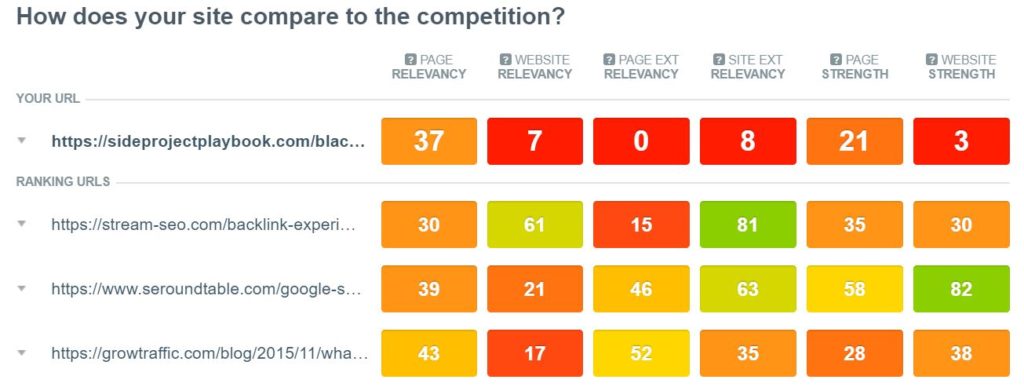
Our page is currently somewhat “meh” but that’s easy to fix. We can improve our article to increase page relevancy and bulking out the website’s overall coverage of the topic.
Lets start by click on one of those arrows to see how competitors are doing things.
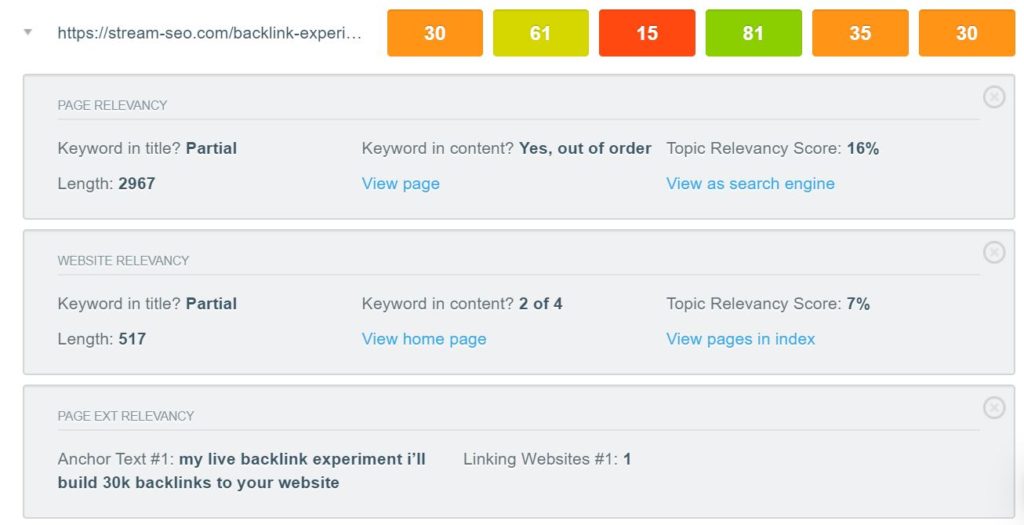
We can get an assessment of the key gaps we need to address in our content.
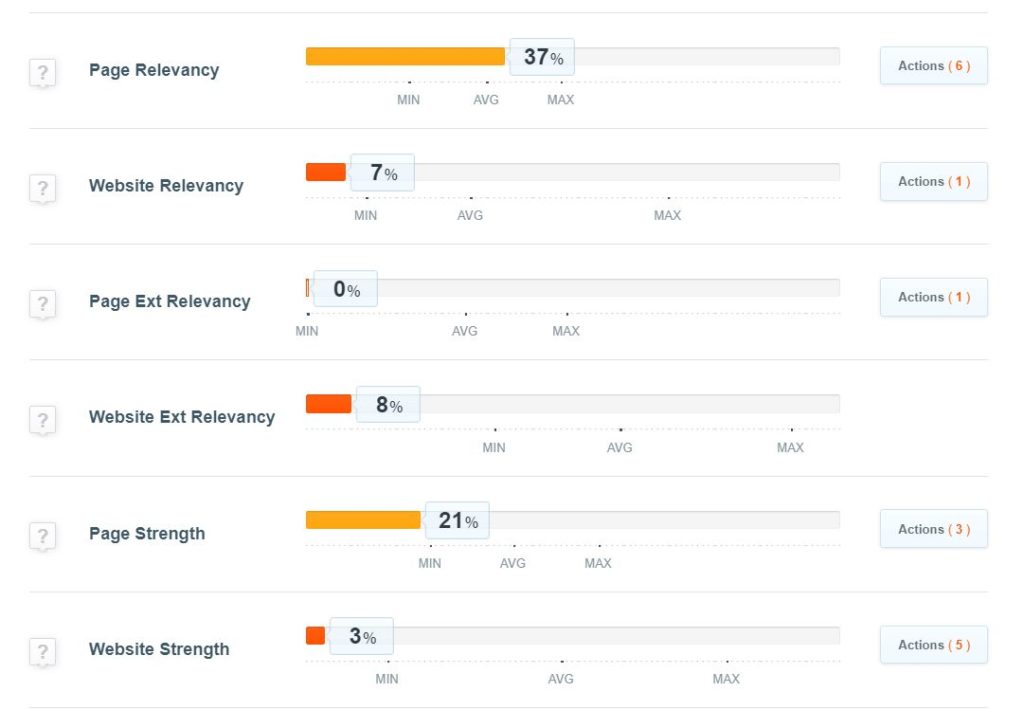
So while we’re not exactly starting from a great place….nobody else is either! Lets see what we need to do to fix this situation. We’re going to click on their ideas for page relevancy to see what they recommend:
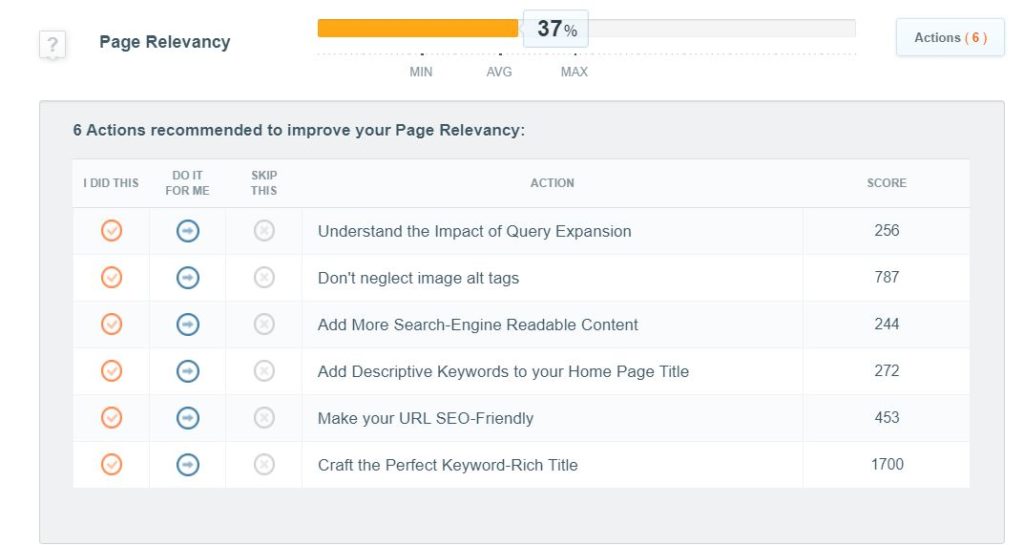
They provide a couple of handy summary reports to get started on tweaking the keywords. For example, looking at keyword usage and related terms.
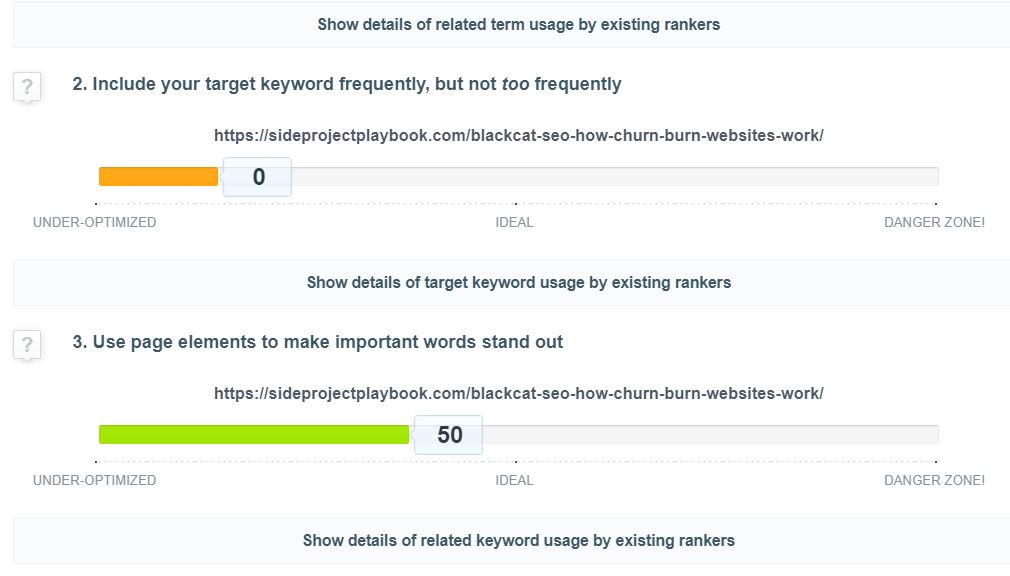
Well, I see an obvious improvement area… perhaps we should actually use the keyword? CanIRank can help you dial in the correct frequency to avoid penalty risk.
I’ve also found enriching your text with related terms to be extremely helpful. Check out what they think we should use below.

As a group, these reports give you a fairly direct process for optimizing your web pages. Run the “Improve My Content” Report, examine the insights, enhance your content, run the report again. You can usually boost your page relevancy up to 70+ in short order.
CanIRank Review – Does It Work?
Does it work? Here’s the traffic trend for an acquired website we optimized using these tools. We’ve seen a lot of growth from tweaking existing articles and adding fresh content in adjacent topics using CanIRank’s guidance.
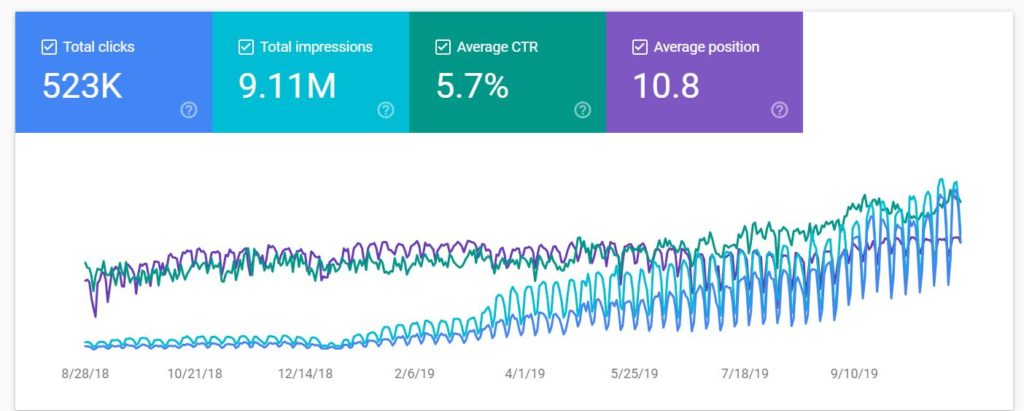
There are three ways to use this tool to increase your return on investing in content:
- For topics where you can rank, it provides a specific list of areas to improve
- It can show you where to stop wasting money (low odds of ranking)
- We use their workflow platform to execute efficiently (track tasks & goals)
We upgraded to a Pro plan ($79 / month) and recently bumped it up to the Agency version after we saw growth at the sites we tested.
You can try their service for free – and they’ve given us a special offer as part of this CanIRank review that will get you a 20% discount for your first 3 months. Use coupon code “twentypercentoffthree”. Sign up here to try their service for free.
We recommend you pair it with SEMRush’s pro-level subscription for keyword analytics and competitive intelligence. These two tools are the foundation of a targeting process.